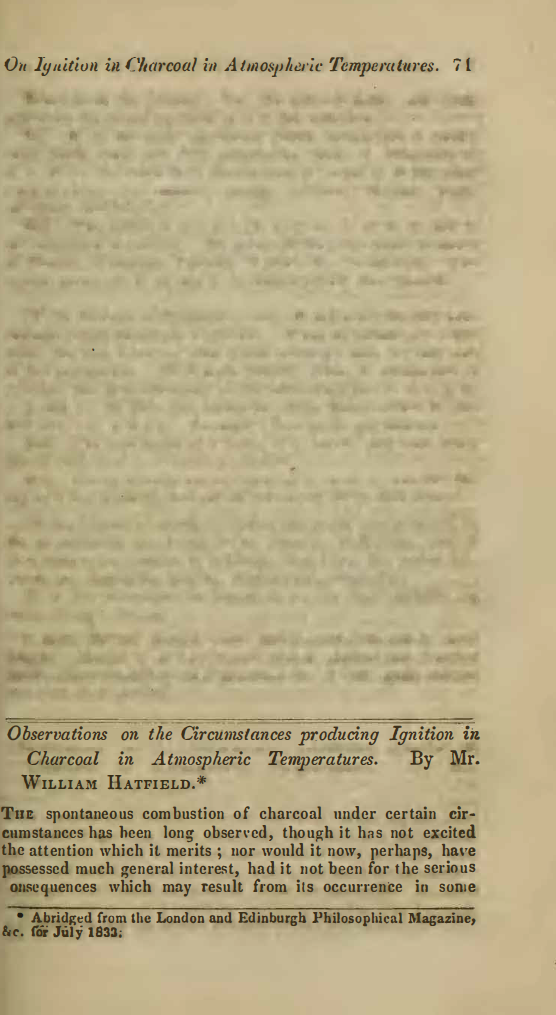Observations on the circumstances producing ignition in charcoal in atmospheric temperatures
DOI:
https://doi.org/10.21504/saqj.21.2696Keywords:
Charcoal, Spontaneous Combustion, Ignition, Atmospheric Temperature, Autocombustion, Gunpowder Manufacture, Exothermic Reaction, Safety Hazard, OxidationAbstract
This article, written by Mr William Hatfield, abridged from the London and Edinburgh Philosophical Magazine for July 1833, details observations and experiments concerning the phenomenon of spontaneous combustion in charcoal at atmospheric temperatures. The author highlights the serious safety and property risks posed by this occurrence, particularly in settings such as gunpowder factories where large quantities of charcoal are used.
Hatfield notes that spontaneous combustion is most common when large quantities of charcoal, especially in a state of minute division (pulverised or small fragments), are gathered in heaps. While manufacturers often attribute this phenomenon to insufficient cooling after production, the author provides anecdotal evidence of ignition occurring in charcoal that had been made and freely exposed to the atmosphere for several days. Two specific accidental cases are described: one where a large, compressed load ignited during transport, and another where a large heap of pulverised, multi-day-old charcoal ignited in a storage building, leading to a fire.
The author hypothesises that in transport/storage incidents, the pressure and friction from pieces rubbing together cause pulverisation, creating a compact mass at the bottom, which is prone to self-heating.
Hatfield describes a series of direct experiments (Exp. 1-4) to investigate the cause:
- Experiments 1-3 used small quantities (120 lbs) of charcoal (old, fresh, and coarse powder) in a barrel. These trials showed a temporary temperature increase (up to 130∘F) followed by a decline to ambient temperature, confirming that small quantities do not spontaneously combust.
- Experiment 4 used a larger quantity (10 cwt or 1,000 lbs) of finely ground, new charcoal in a hogshead. The internal temperature steadily rose from 65∘F to 180∘ or 190∘F, at which point combustion occurred internally, surprisingly near the surface.
A final observation details a large heap of small charcoal igniting in several places over three to seven days, even after being soaked with water, reinforcing the persistent danger. The article concludes that the degree of pulverisation and the sheer quantity/volume of the charcoal are key factors in producing ignition.
Downloads

